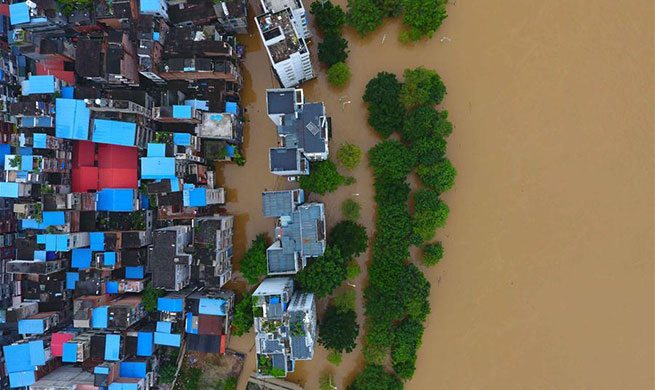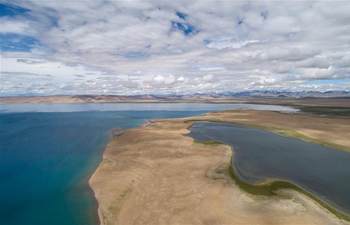JERUSALEM, July 10 (Xinhua) -- Israeli and U.S. researchers have solved the mystery of the sinking salt crystals in the Dead Sea, the Geological Survey of Israel (GSI) published on Wednesday.
The process leading to the slow falling and the expansion of salt layers at the bottom of the Israeli-Jordanian lake intrigues the scientists, because this apparently contradicts the principles of physics.
The study, conducted by researchers from the University of California, Santa Barbara, the GSI and Bar-Ilan University in central Israel, explains the unusual phenomenon.
The research findings, published in the journal Water Resources Research, may help to understand how large salt deposits evolved on Earth.
The Dead Sea lake is located at the lowest point in the world which is more than 433 meters below sea level in southeast Israel and has no life in its water because of its high concentration of salt with more than 34 percent.
It was discovered in 1979 that saline crystals emerged from the upper layer of the water, slowly sinking into a process that scientists likened to "snowing" and piling up at the bottom.
It was found in the Israeli-U.S. research that small spores in the lake, caused by waves or other motions, create "salt fingers" that lead the salt to the bottom in a kind of funnel.
According to the researchers, at first, only a few millimeters thick of salt fingers are created, forming a huge amount of salt stream.
Next, they quickly connect with each other as they fall, creating larger structures.
During the summer, the sun warms the Dead Sea surface and divides it into two layers, a warm top layer and a colder one. When the water evaporates from the top layer, it becomes saltier than the lower one.
The scientists realized that the salt sinking comes from the upper layer, but this hot water does not mix with the colder water below because of the temperature and the density differences.
Assisted by a computer simulation, the researchers found that when the upper layer "shakes" because of waves or other motions, some hot water enter the colder layer below.
Heat dissipates faster than salt, so the water quickly cools.
As they cool down, the water becomes less saline, so salt deposits break down and form crystals that sink to the bottom.

















